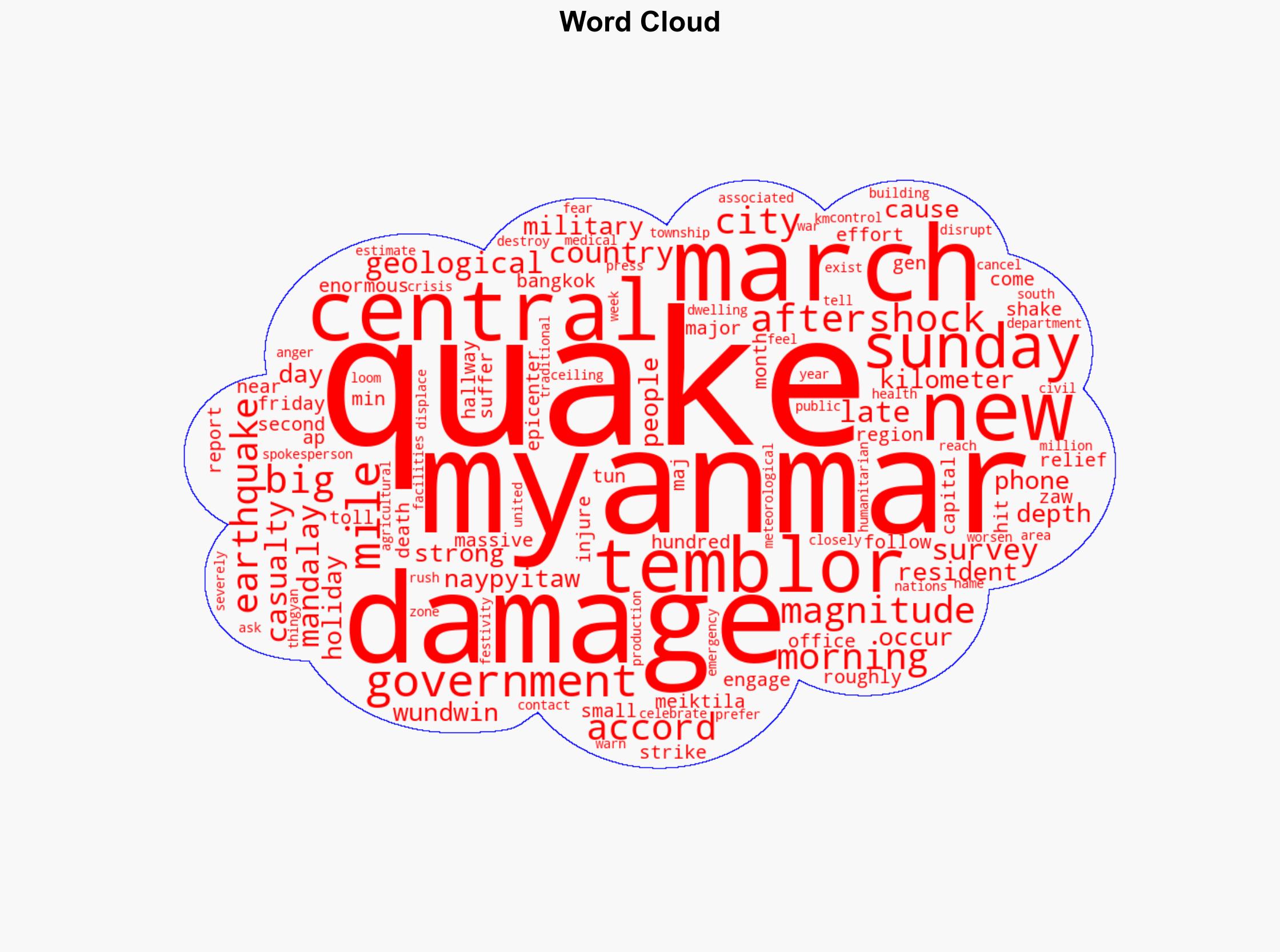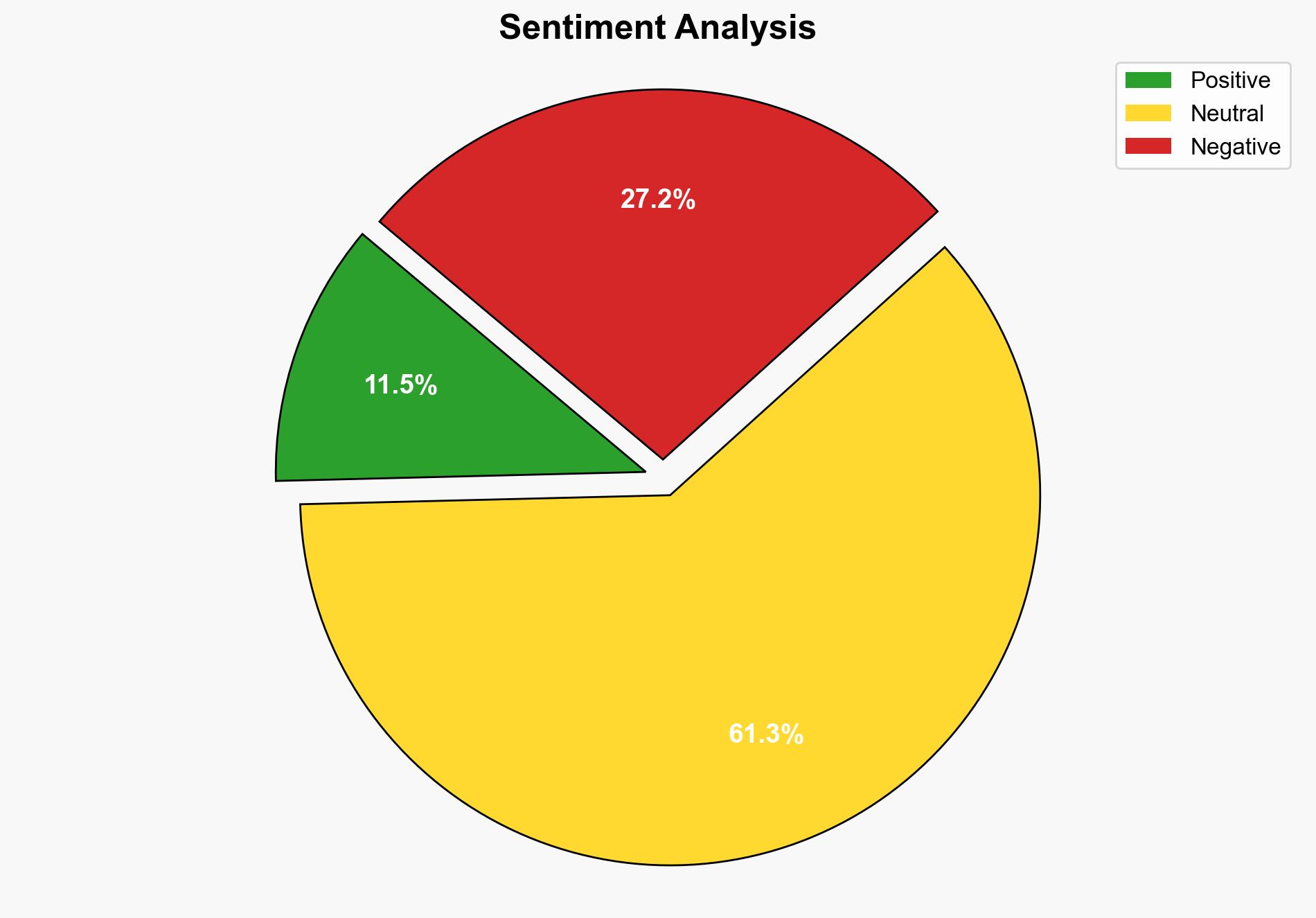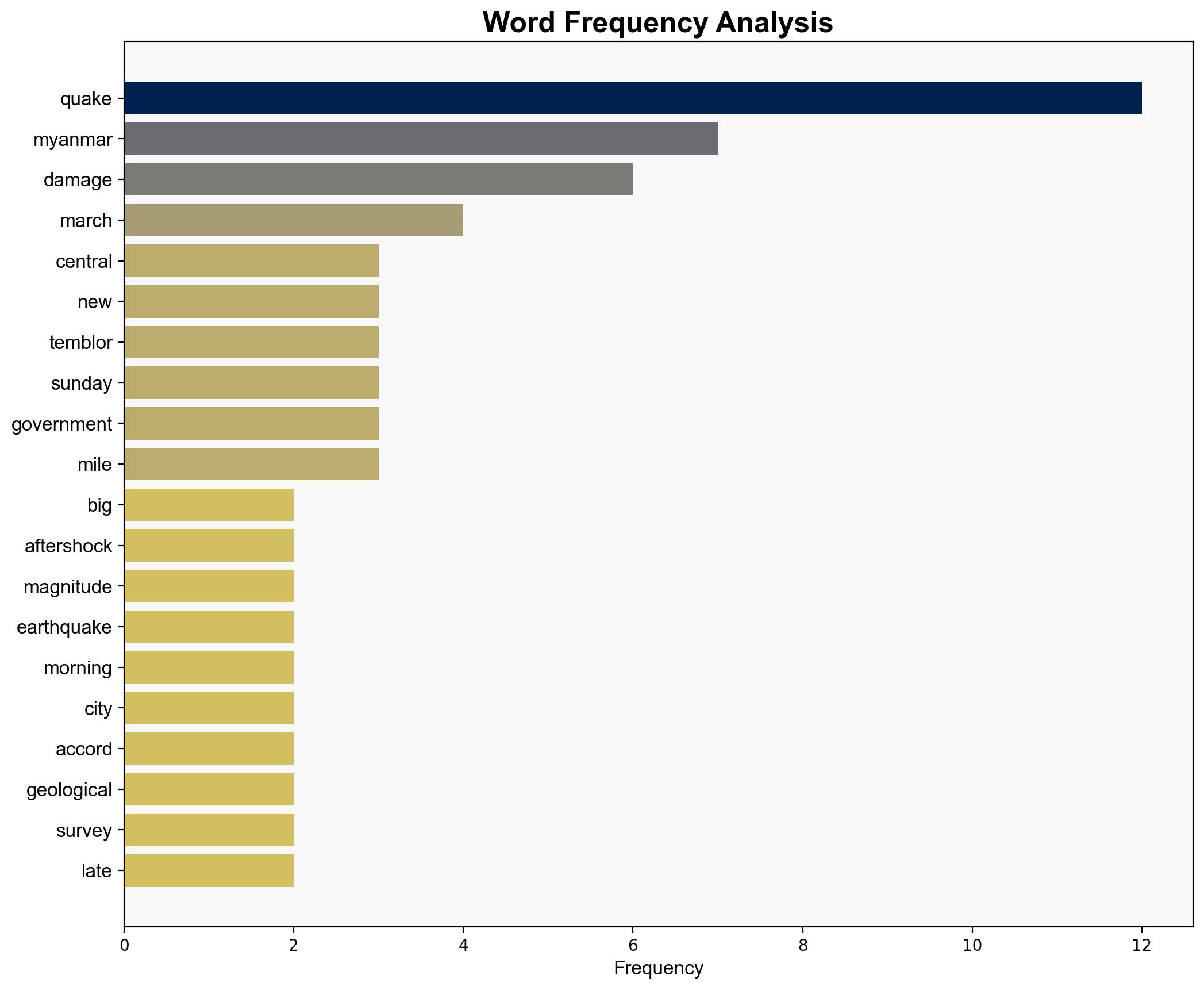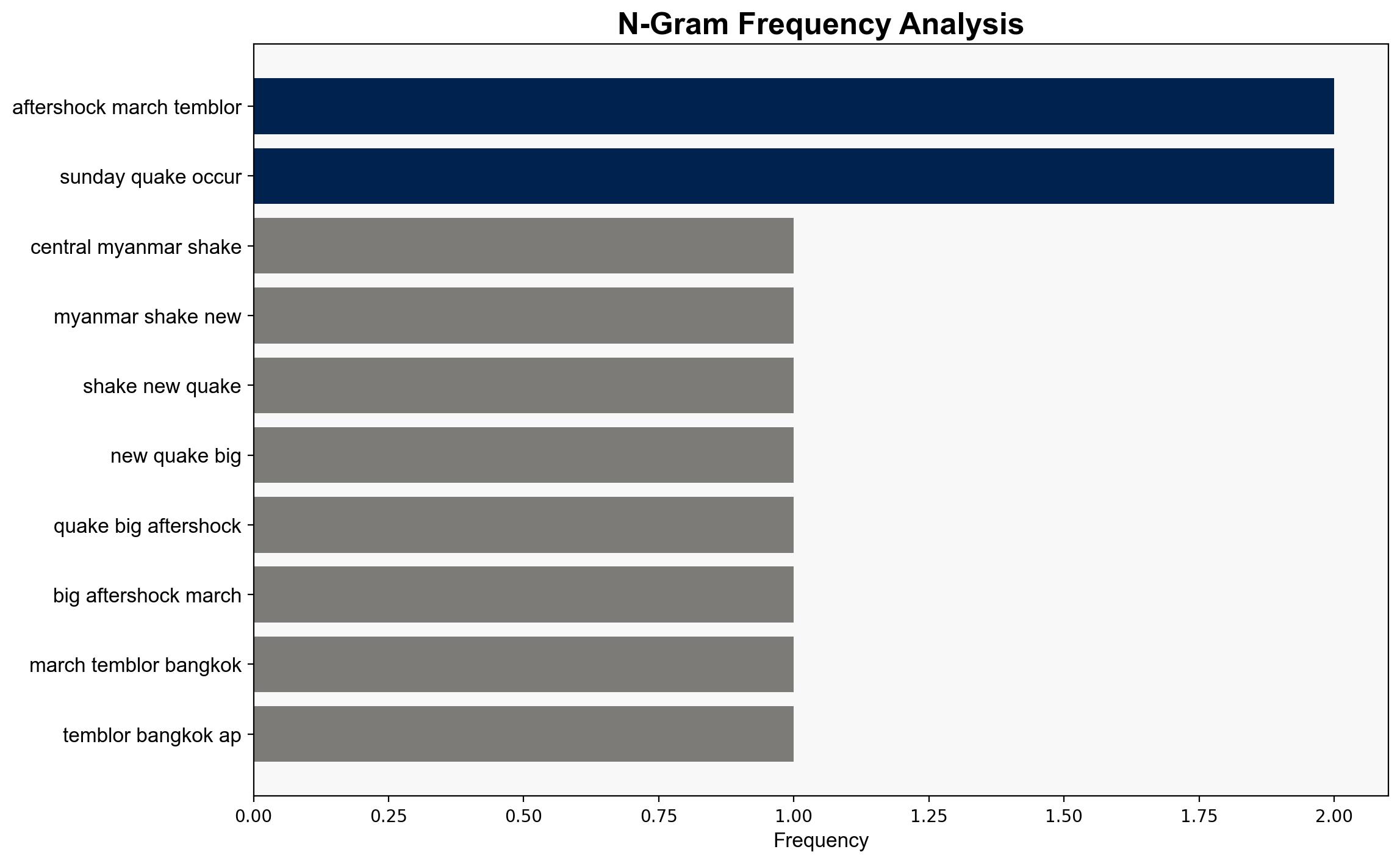Central Myanmar shaken by new quake in one of the biggest aftershocks since March 28 temblor – Yahoo Entertainment
Published on: 2025-04-13
Intelligence Report: Central Myanmar shaken by new quake in one of the biggest aftershocks since March 28 temblor – Yahoo Entertainment
1. BLUF (Bottom Line Up Front)
A magnitude 5.5 earthquake struck near Meiktila in central Myanmar, marking one of the largest aftershocks since the significant March 28 temblor. The recent quake, occurring during the Thingyan holiday, has not yet resulted in major damage or casualties. However, it exacerbates the ongoing humanitarian crisis following the March 28 earthquake, which resulted in significant casualties and infrastructure damage. Immediate attention is required to address potential humanitarian and security challenges.
2. Detailed Analysis
The following structured analytic techniques have been applied for this analysis:
General Analysis
The earthquake struck 97 kilometers south of Mandalay, at varying reported depths of 7.7 km to 20 km. The region is already under strain from the March 28 earthquake, which caused extensive damage and loss of life. The latest seismic activity highlights the vulnerability of Myanmar’s infrastructure and the potential for further humanitarian challenges. The ongoing civil conflict compounds these issues, hindering effective disaster response and recovery efforts.
3. Implications and Strategic Risks
The recent earthquake poses several strategic risks:
- Increased humanitarian needs due to the compounded effects of natural disasters and civil unrest.
- Potential for further infrastructure damage, disrupting essential services and economic activities.
- Risk of exacerbating regional instability, affecting neighboring countries and international interests.
- Challenges in coordinating relief efforts due to restricted information flow and government control.
4. Recommendations and Outlook
Recommendations:
- Enhance coordination with international humanitarian organizations to provide immediate relief and support.
- Invest in infrastructure resilience to withstand future seismic activities.
- Encourage transparent information sharing to improve disaster response effectiveness.
Outlook:
Best-case scenario: Effective international cooperation leads to swift relief efforts, mitigating the humanitarian impact and stabilizing the region.
Worst-case scenario: Continued seismic activity and civil unrest overwhelm local capacities, leading to a prolonged humanitarian crisis.
Most likely scenario: Gradual recovery with intermittent challenges due to ongoing political and environmental instability.
5. Key Individuals and Entities
The report mentions Zaw Min Tun as a spokesperson providing casualty figures. The United Nations has issued warnings about the humanitarian impact. The U.S. Geological Survey provided seismic data. Local residents, who requested anonymity, reported on-the-ground conditions.




